HI6025 Accounting Theory & Current Issues
29 Pages4378 Words122 Views
Holmes Institute Sydney
HI6025 Accounting theory and current issues (HI6025)
Added on 2020-05-08
HI6025 Accounting Theory & Current Issues
Holmes Institute Sydney
HI6025 Accounting theory and current issues (HI6025)
Added on 2020-05-08
ShareRelated Documents
Running head: ACCOUNTING THEORY AND CURRENT ISSUEAccounting Theory and Current IssueName of the StudentName of the UniversityAuthor’s Note

1ACCOUNTING THEORY AND CURRENT ISSUEExecutive SummaryThe report deals with the accounting policies used by “Insurance Australia Group (IAG)” anddepicts the flexibility of the accounting policies. It has been further able to compare the policieswith the rival company “QBE Insurance Group Limited”. Some of the other sections of thediscussion has evaluated the quality of disclosure, identified the potential red flag area ofdisclosure and overall compliance with the conceptual framework. The state of compliance to theconceptual framework for “Insurance Australia Group Limited” has been evident withpreparation of financial report as per Corporations Act 2001. This has been further seen to beevident with that adoption of “Australian Accounting Standards (AASB)” with various types ofauthoritative pronouncements as per AASB ASX rules for listing. Based on the interpretation ofthe accounting policies of both the companies it can be stated that “Insurance Australia GroupLimited” is seen to follow the guidelines of Positive Theory of Accounting whereas QBEInsurance’s accounting policies are more normative in nature. “Insurance Australia GroupLimited” has been identified to be flexible with the various types of segment reporting in itsoperating segments associated to the internal reports reviewed by Chief Executive Officer. “QBEInsurance Group Limited” is more flexible in adaptation of newer standards.
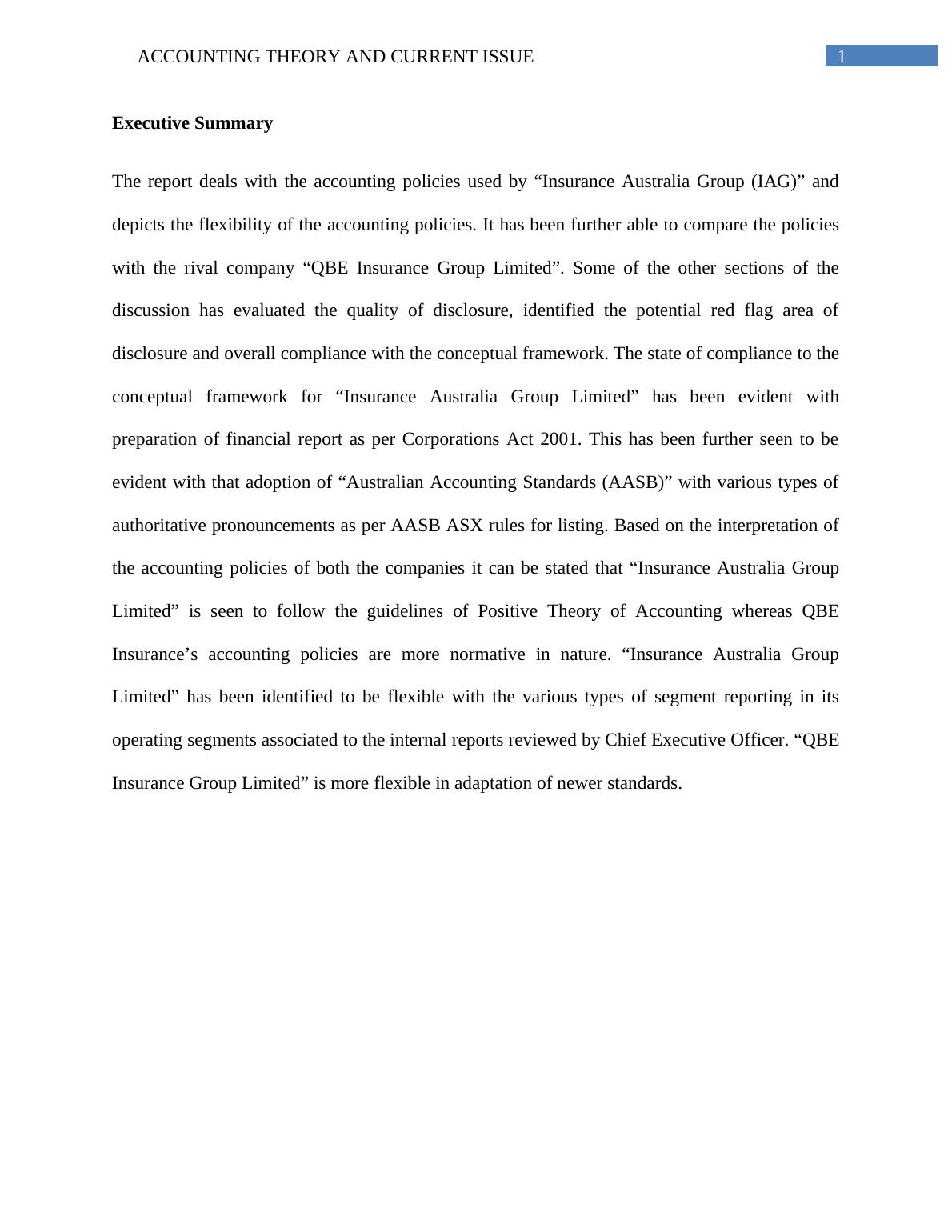
2ACCOUNTING THEORY AND CURRENT ISSUETable of ContentsIntroduction......................................................................................................................................4Section 1: Identification of the key Accounting Policies................................................................5Section 2: Assessment of Accounting Flexibility............................................................................6Section 3: Evaluating Accounting Strategy.....................................................................................8Norms for accounting policies with industry peers.....................................................................8Incentives for managers to manage earnings...............................................................................8Changes in policies and estimates and the rationale....................................................................8Structuring of the transaction to achieve certain accounting objectives......................................9Section 4: Evaluating the Quality of Disclosure..............................................................................9Adequacy of the disclosures........................................................................................................9Adequacy of footnotes to the financial statements......................................................................9Rationale for Financial Notes consistent with current performance.........................................10GAAP reflects or restricts the appropriate measurement of key measures of success..............10Adequacy of segment disclosure...............................................................................................11Section 5: Identification of the Potential Red Flags......................................................................11Unexplained changes in accounting, especially when performance is poor..............................11Unexplained transactions that boost profits...............................................................................11Unusual increases in receivables in relation to sales revenue...................................................12
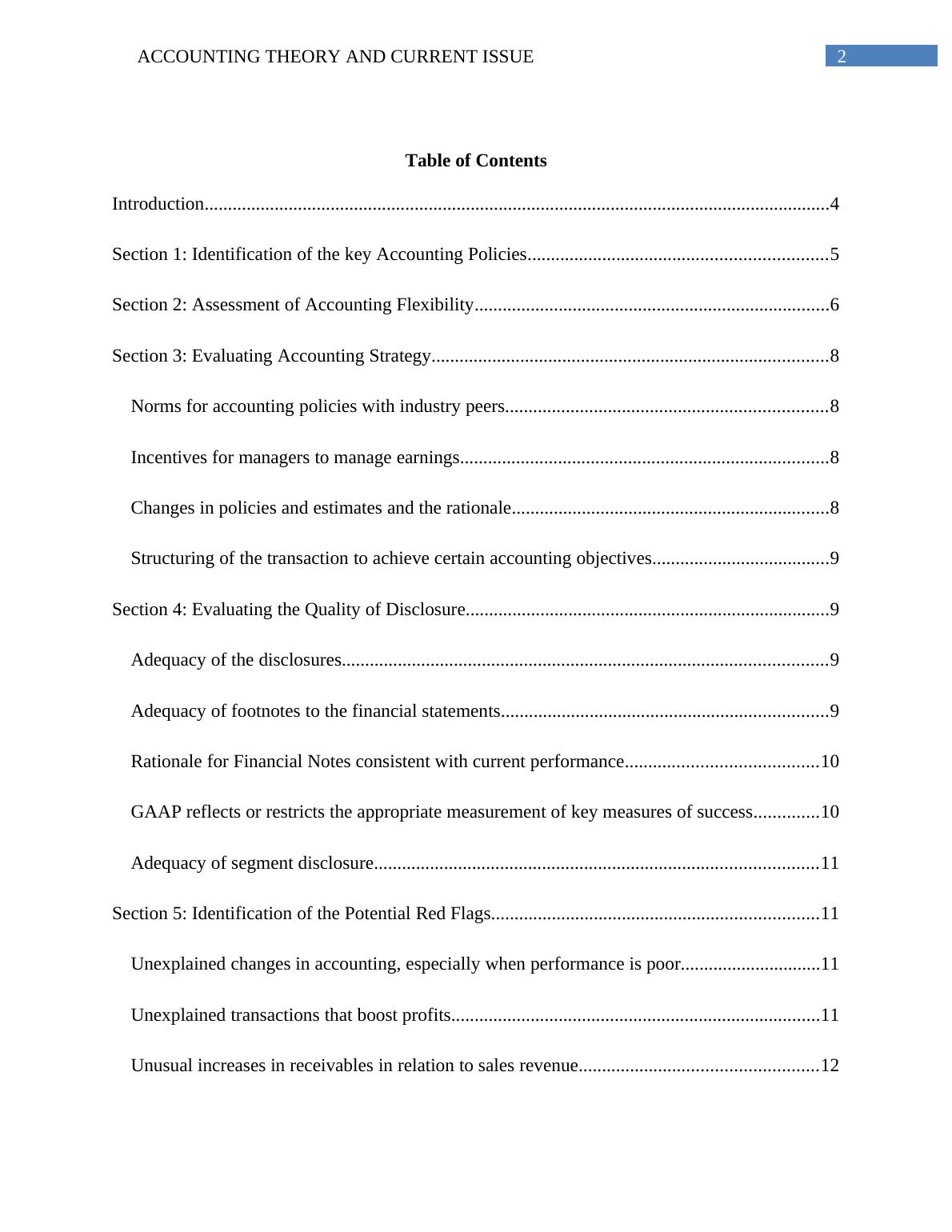
3ACCOUNTING THEORY AND CURRENT ISSUEIncreases in the gap between net income and cash flows or taxable income............................12Use of R&D partnerships, SPEs or the sale of receivables.......................................................12Unexpected large asset write-offs..............................................................................................12Large fourth-quarter adjustments..............................................................................................13Qualified audit opinions or auditor changes..............................................................................13Related-party transactions.........................................................................................................13Section 6: Compliance with the Conceptual Framework..............................................................13Conclusion.....................................................................................................................................14Reference List................................................................................................................................16List of Appendix............................................................................................................................18
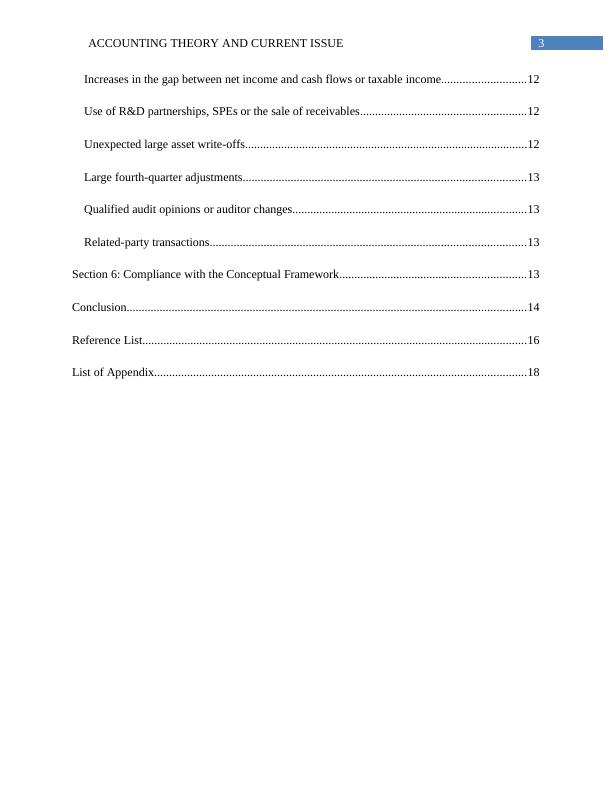
4ACCOUNTING THEORY AND CURRENT ISSUEIntroductionAccounting system is composed of thoroughly constructed application of theories whichshows the method for depicting accurate performance of company. The two main theories of thissystem have been identified with positive and normative accounting. The positive accountingtheory deals with overall contracts which a company has ventured. The positive accountingconcept identifies real life incidences and interprets how the companies will be able to addressaccounting treatments along with their respective transactions. Henceforth, this theory looks intounderstanding that the real-life economic consequences of the accounting decisions as a result ofthose events. The knowledge of application of the positive accounting will be able to predict onhow the companies are able to account for the different types of transactions and the eventswhich are taking place in the future. The conceptualization of normative accounting on the otherhand deals with what has already occurred in the companies that present. This concept deals withthe theoretical principle of what should be done for a particular event. Therefore, the normativeapproach can be termed as a deductive process which is able to deduce the specific policies andgeneralize higher level of principles. However, there is no way to discern the best among bothaccounting systems (Velayutham 2014). The study has highlighted the accounting policies used by “Insurance Australia Group(IAG)” and estimated on the flexibility of the accounting policies. It has been further able tocompare the policies with the rival company “QBE Insurance Group Limited”. Some of the othersections of the discussion has evaluated the quality of disclosure, identified the potential red flagarea of disclosure and overall compliance with the conceptual framework (Unerman andChapman 2014).
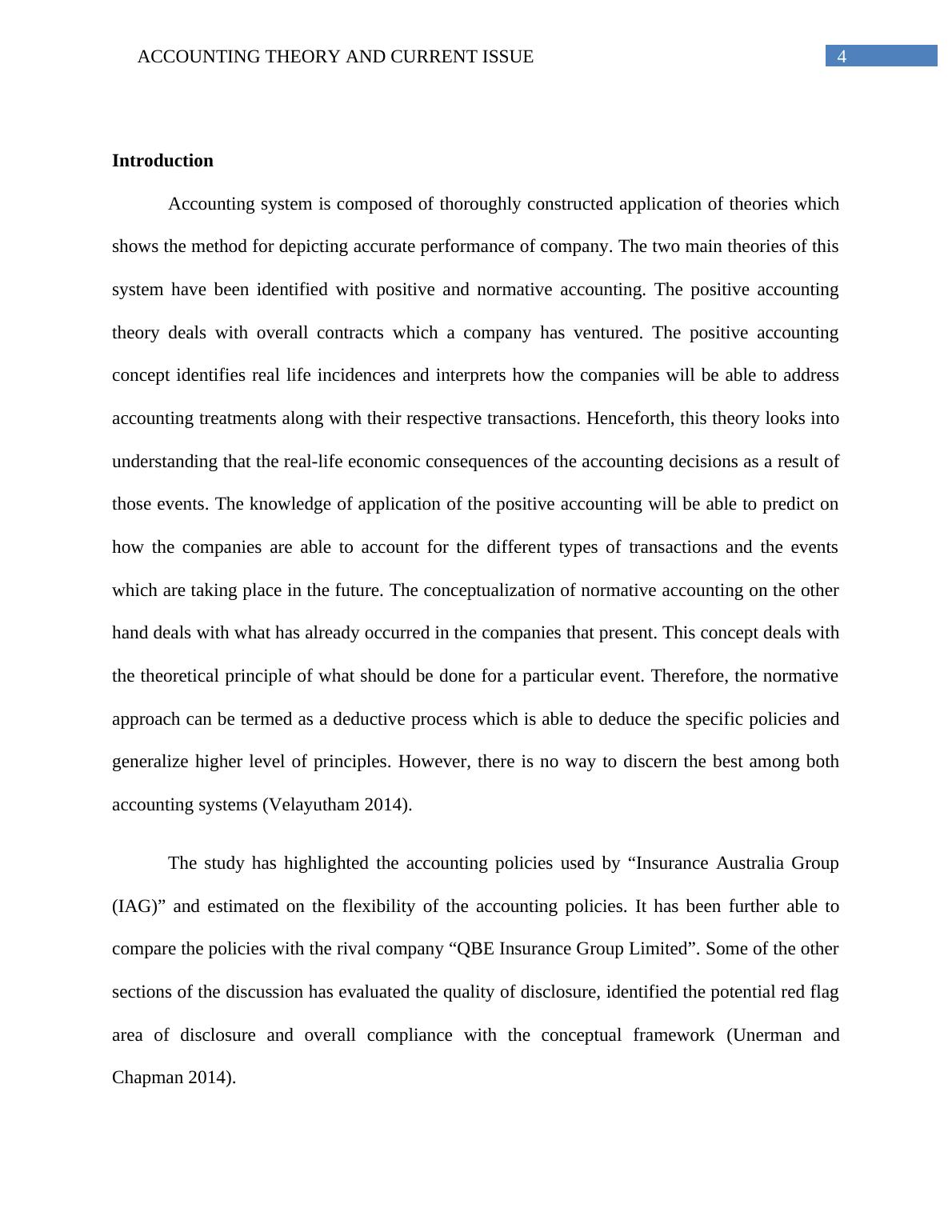
5ACCOUNTING THEORY AND CURRENT ISSUESection 1: Identification of the key Accounting Policies“Insurance Australia Group Limited” headquartered in Sydney, Australia is identified asa multinational insurance company which was established as a result of demutualization ofNRMA insurance business on July 2000. The main operations of the company is seen to bespread across Australia, New Zealand and Asian countries such as Thailand, India, China,Vietnam and Malaysia.The financial reports of the company have been prepared in accordance with“Corporations Act 2001”, “Australian Accounting Standards (AASB)”. The accounting policiesadopted as a result of preparation of financial report is seen to be consistent with the entities ofthe group and the same has been applied to all the previous reporting years unless there is anydecision for modification. The related financial statements associated to the operations outsideAustralia have been appropriately maintained through overseas accounting principles and thesame are adjusted wherever necessary for compliance and consolidation (Christensen, Nikolaevand Wittenberg-Moerman 2016).Based on the interpretations of annual report published in 2016, the changes in theaccounting policies and the Australian accounting standards did not have any impact on thematerial statement of the group. The process of application of significant accounting policies andaccounting estimates are made by the management and the same is seen to affect the recognitionof the financial statements. The different types of estimates and the related are considered as perthe experience and factors which are reviewed as an ongoing process. The areas of criticalaccounting estimates and judgments are referred with Note 2.2“Claims and reinsurance andother recoveries on outstanding claims”, Note 2.4 “Liability adequacy test”, Note 5.1“Intangible assets and goodwill impairment testing, initial measurement and useful life”, Note
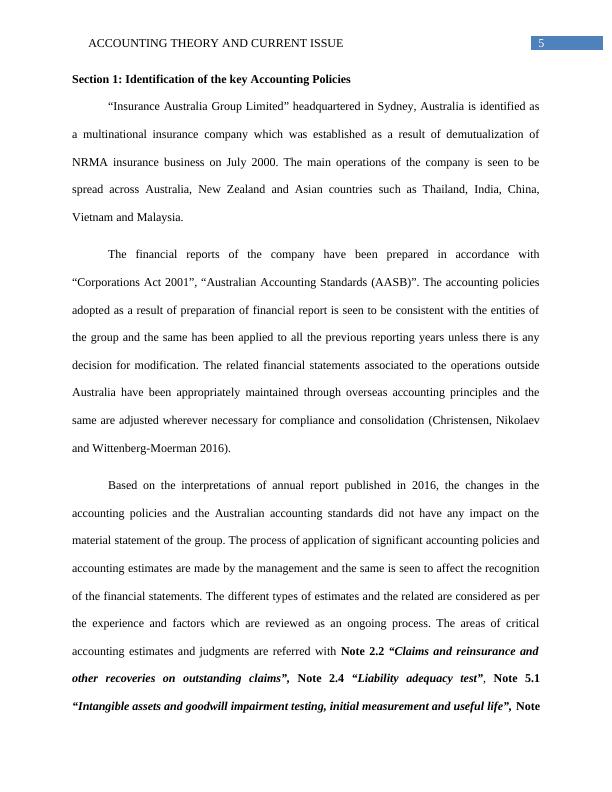
End of preview
Want to access all the pages? Upload your documents or become a member.
Related Documents
Accounting Polices and Approaches Reportlg...
|17
|4166
|64
Accounting Theory and Issues.lg...
|17
|3950
|58
Accounting Theory and Current Issuelg...
|22
|4753
|42
Assignment on Accounting - Telstralg...
|17
|4247
|224
Accounting Theory Assignment | Financial Reportlg...
|15
|4324
|114
Significance of Maintaining High Financial Reporting Quality in Entity Public Disclosure Statementslg...
|15
|4262
|168
